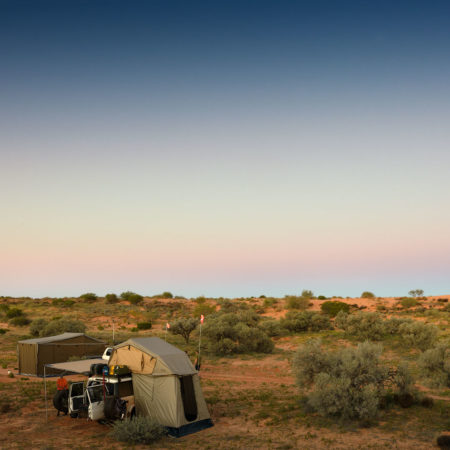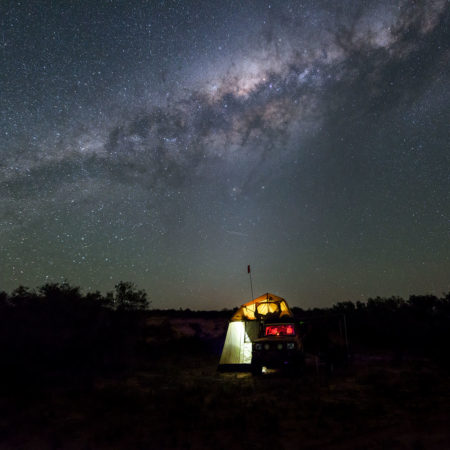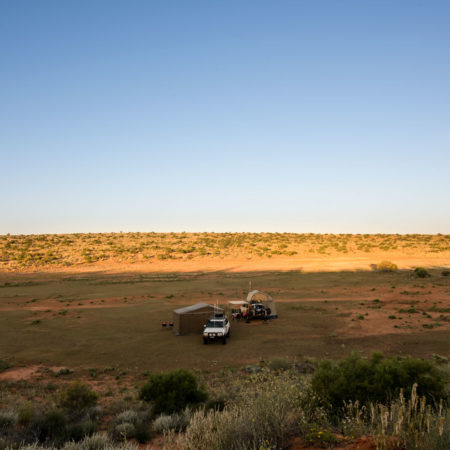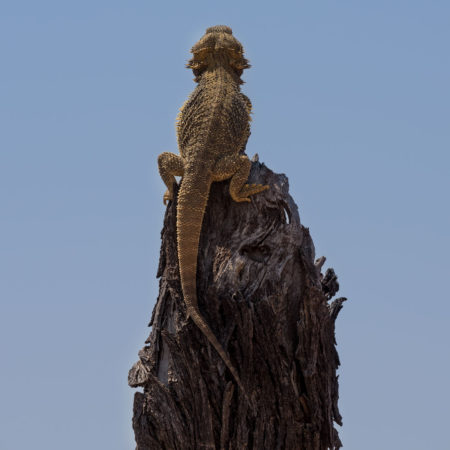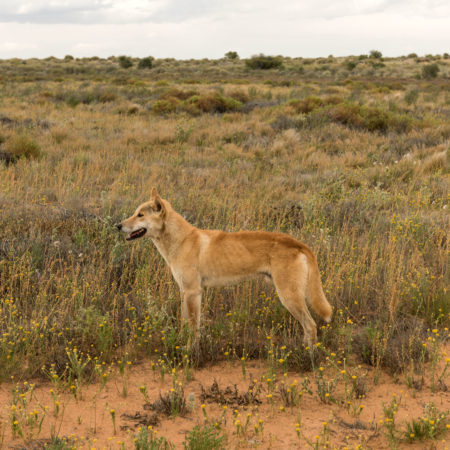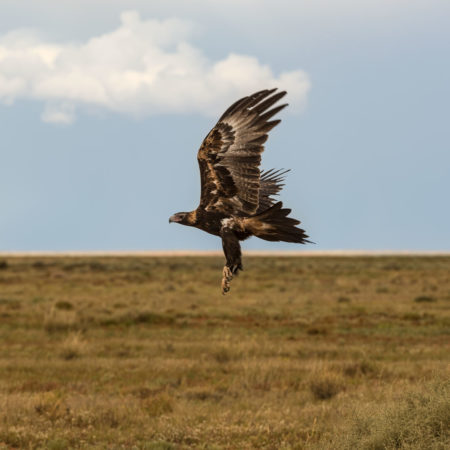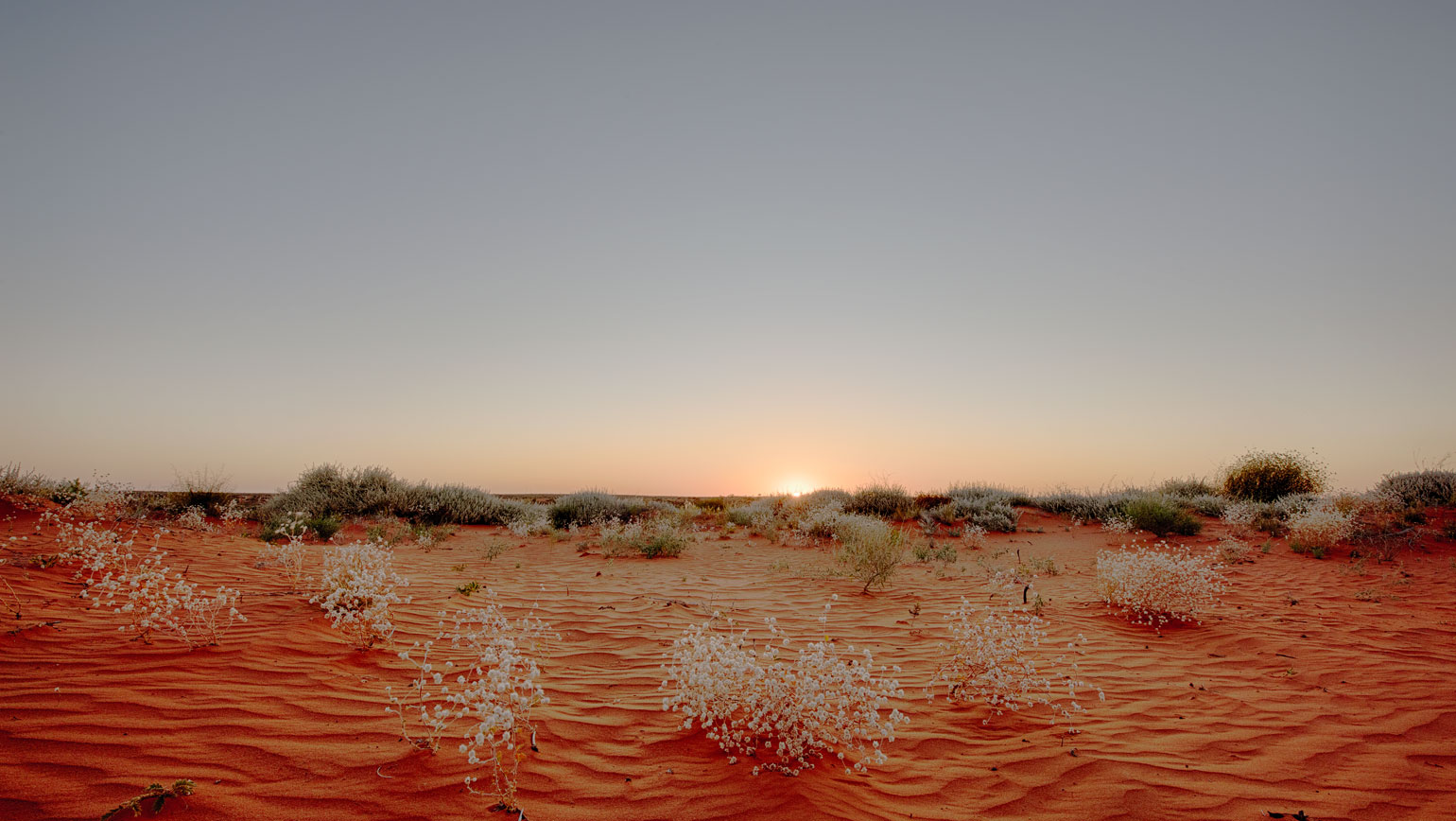
Simpson Desert, Australian outbackfeatured
Simpson Desert, Australia
My fascination with the desert has started in Sahara after spending a week in Lybia in early 2000. Since then an idea of spending more time in complete isolation from civilization was always an appealing endeavor. Such sense of serenity, complete solitude and surrender to nature I guess can only come in remote lands and sea in today’s organized and busy world. Accessing those areas, of course, requires major preparation and skills. The Simpson Desert covers 176,500 km2 and is the world’s largest sand dune desert. It is very remote and located within the driest region of the Australian continent. It is a conservation park and there is absolutely nothing there in terms of facilities or civilization of any kind. Be prepared to be completely self-sufficient on your journey.
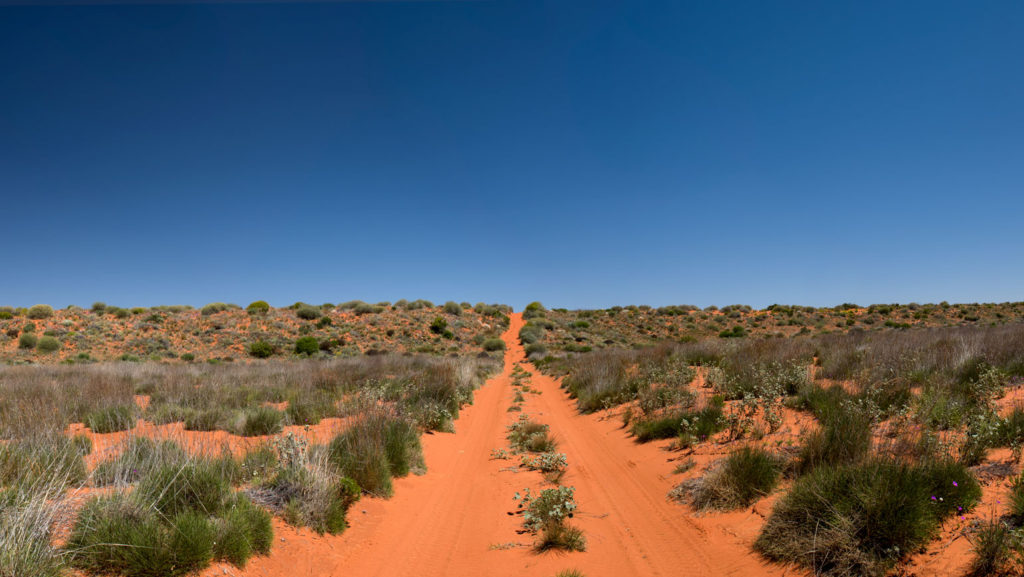
Simpson Desert
Access and Route
Start your journey in Adelaide and drive north to Coober Pedy where you can stay the night. I recommend doing all your food and supplies shopping in Adelaide because from that point on you will have very limited choices that will become non-existent beyond Coober Pedy. I like “glamping” style of camping and we always carry fresh food, gourmet choice of coffee, cheeses and fabulous champaign. But that’s me, you might want to rough it out! We had a shower with us and plenty of water.
Next day drive east to Oodnadatta following onto Mt Dare, which is the last place where you can get petrol and water before entering the Simpson Desert. Mt Dare also has a tiny hotel where we stayed the night. It has basic cabin accomodation and camping facilities. You can also get Desert Pass, hire a sat phone and get road information from Mt Dare Hotel.
The French line that we have followed starts at Dalhousie Springs and finishes at Birdsville in QLD. Going west to east is considered to be an easier route due to gentler dune gradient. The trip is 434 km but considering that most of the time your average travel speed is 20 km an hour, allow 4-5 days for crossing. You will drive over 1,100 parallel sand dunes and numerous salt lakes by the time you arrive at Big Red – the highest and most difficult dune where you can watch your last sunset in the desert before finishing the trip 35 km later at Birdsville pub. The desert can only be accessed from mid-March to November as the temperatures soar above 50C degrees over summer and a breakdown can be fatal.
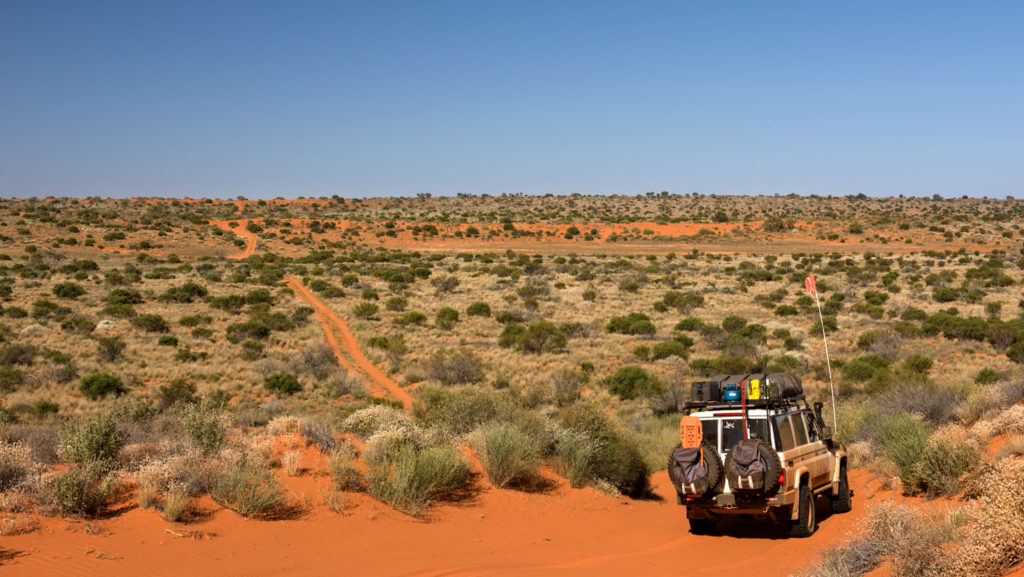
Simpson Desert
The Desert
Through the whole journey, unless crossing a salt lake, you will see just 3 colors: bright orange/red, green and blue. This type of scenery you will encounter for miles upon miles. After the rain, the sand dunes can get covered with wildflowers and you get some color variety. Occasionally you will see wild melons (Paddy Melons) growing on the sand dunes. They do make a pretty sight although they are poisonous.
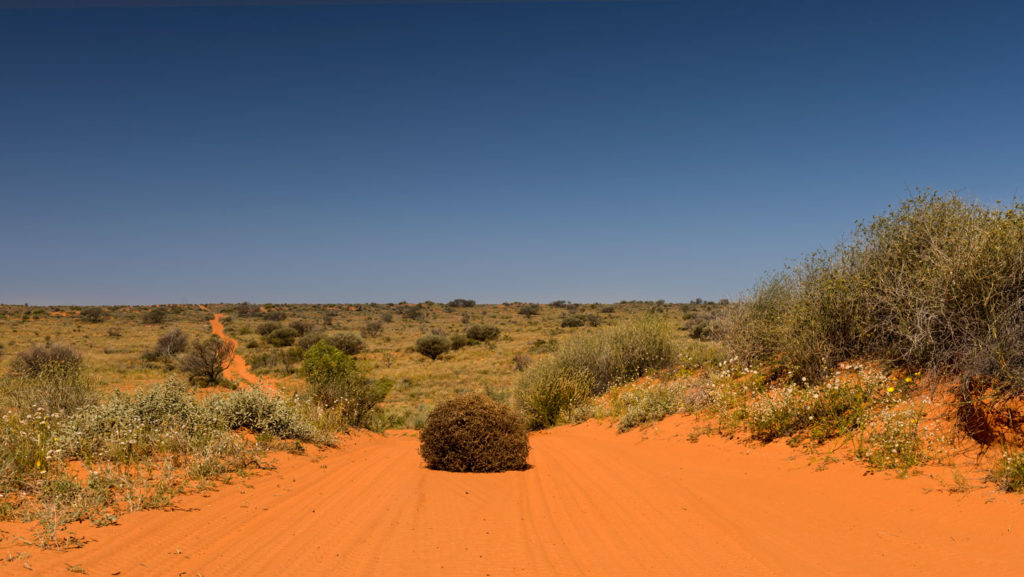
Simpson Desert
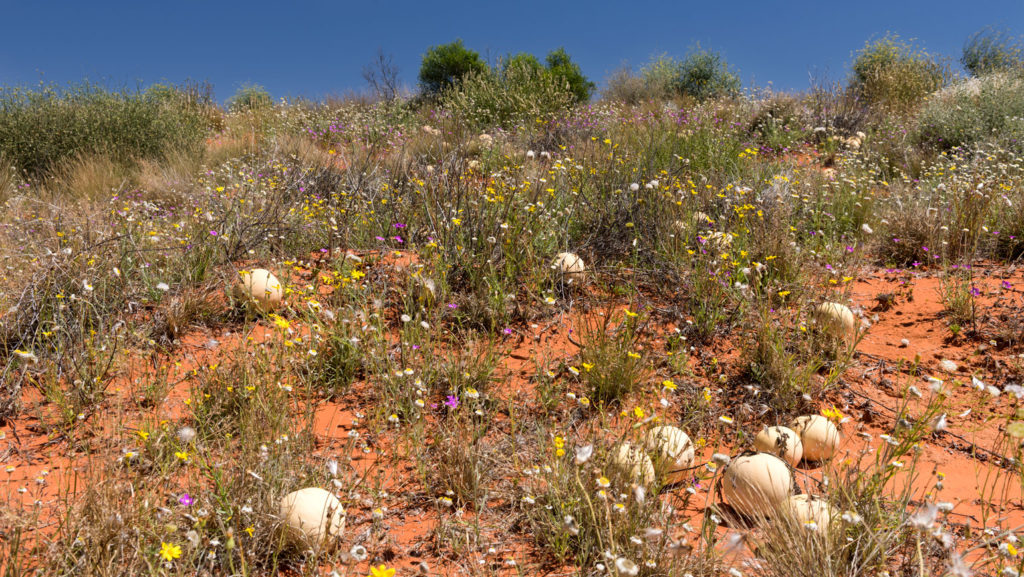
Paddy Melons
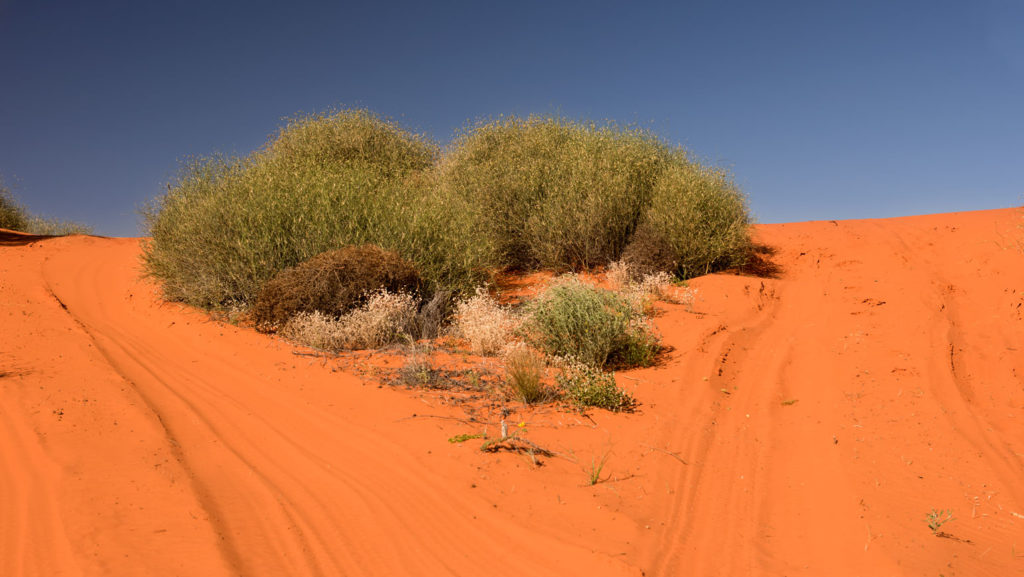
Simpson Desert
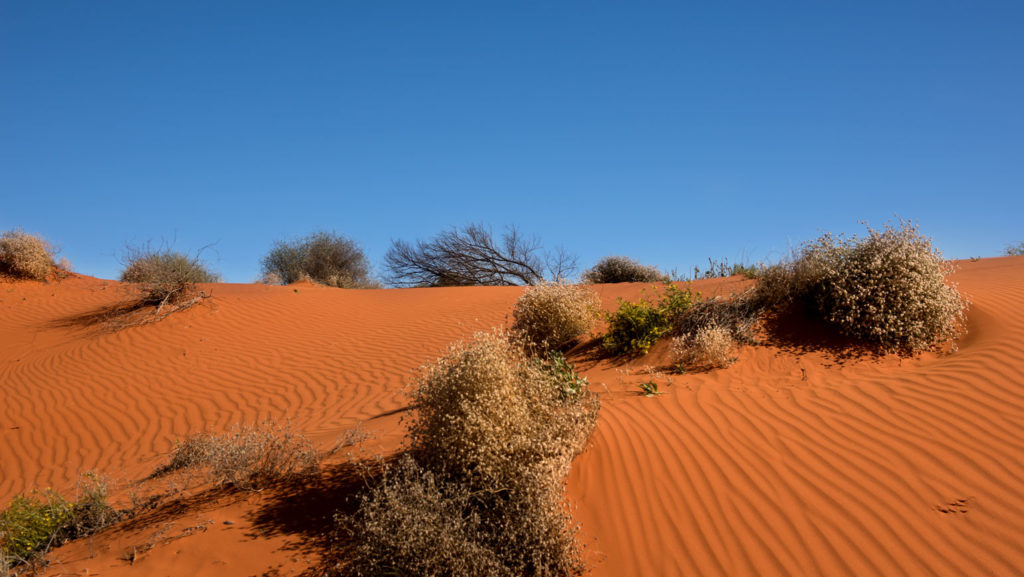
Simpson Desert
The Salt Lakes
The salt lakes are incredible to see but sometimes difficult to cross. After the rain, the ground turns into deep sticky mush and if you are going to get stuck anywhere in Simpson Desert it will most likely happen on the salt lake after some flooding. The salt lakes come in series. They are very infrequent on the first couple of days but on day 3 of crossing they are multiple. If you get stuck in the middle of the lake, winching yourself out will not be possible, prepare to use max tracks and do some digging! Otherwise, they are very pretty and seem to go on forever!
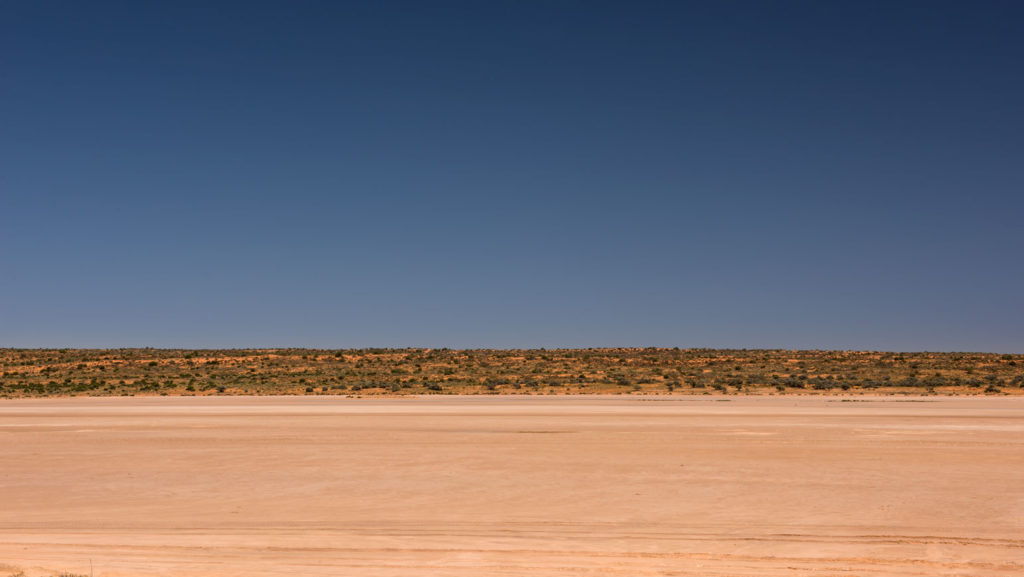
Salt Lakes of Simpson Desert
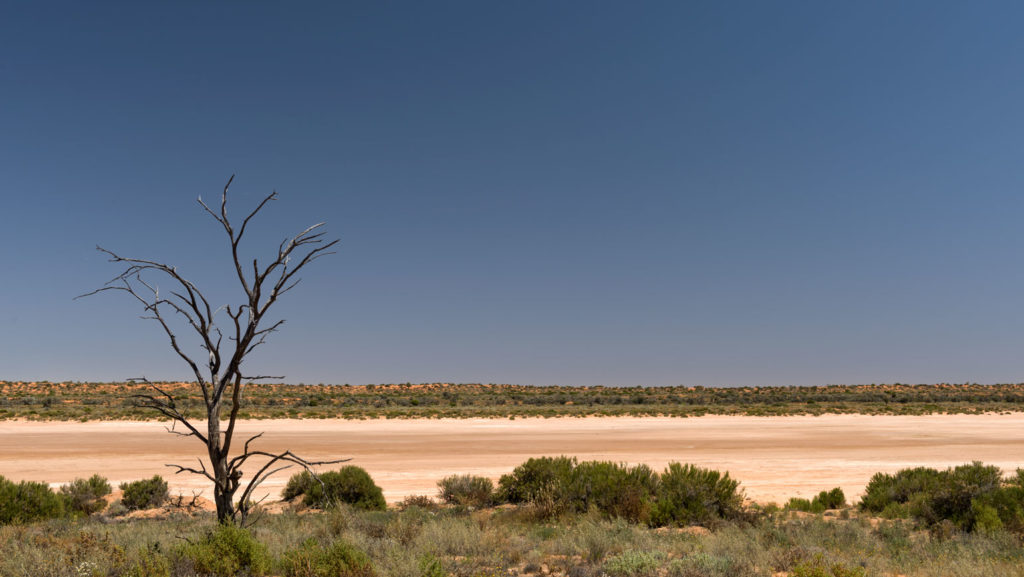
Salt Lakes of Simpson Desert
Camping
Camping in the Simpson Desert is a unique experience. After a long day driving, you still have a task to set up camp and prepare for dinner. There are some people with tents on trailers, but that’s not recommended by the Park as crossings can become rather difficult. We like the concept of having everything mobile and in one place. We use a rooftop tent and a small annex on the side. I personally feel safer that way as you are away from the ground and encounters with snakes and Dingos in the middle of the night are less frequent. Finding a camping spot is easy. After a tiresome drive, find a flat spot and set up! The chances are you will be alone as far as you can see and hear. Then just enjoy the sunset and the endless sky with Milky Way!
The Wild Life
Simpson desert is home to some feral animals such as rabbits, camels, and foxes. You will most likely encounter some dingos during the day out and about but other animals are harder to come by. Mostly you will enjoy a company of lizards and snakes as well as some eagles. Apparently, more than 150 species of birds inhabit the Simpson Desert but you are more likely to see any of them after a rainy season.
The Big Red
We have traveled through the Simpson Desert for 4 days before we reached the final and iconic milestone – the Big Red. Try to time your trip so that you get there before sunset. Depending on your car, your skills and the sand conditions on the day it might take you a few goes to actually drive up to the top of the dune. The view is just beyond spectacular. Save your best bottle of champagne for that last sunset! After this you still have a couple of hours drive to Birdsville where dinner and shower await you, so don’t stay too long no matter how tempted! There is nowhere to camp around Big Red as it is sacred Aboriginal land.
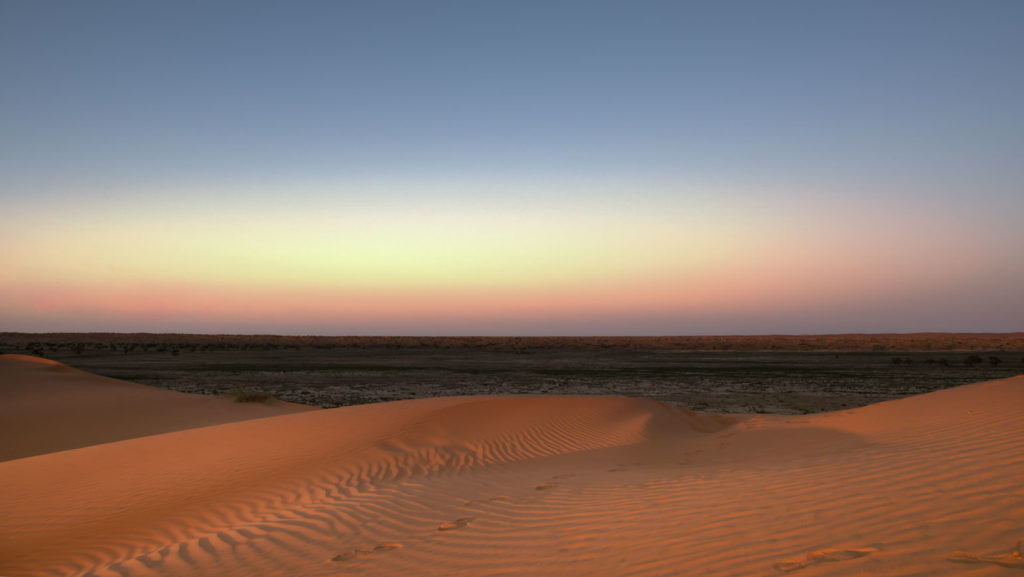
Big Red
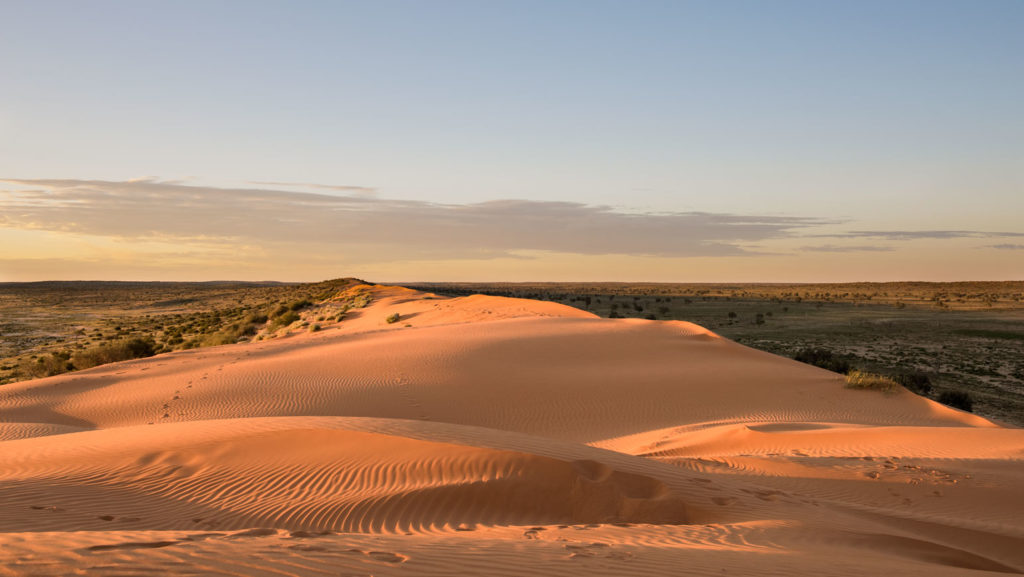
Big Red, Simpson Desert

